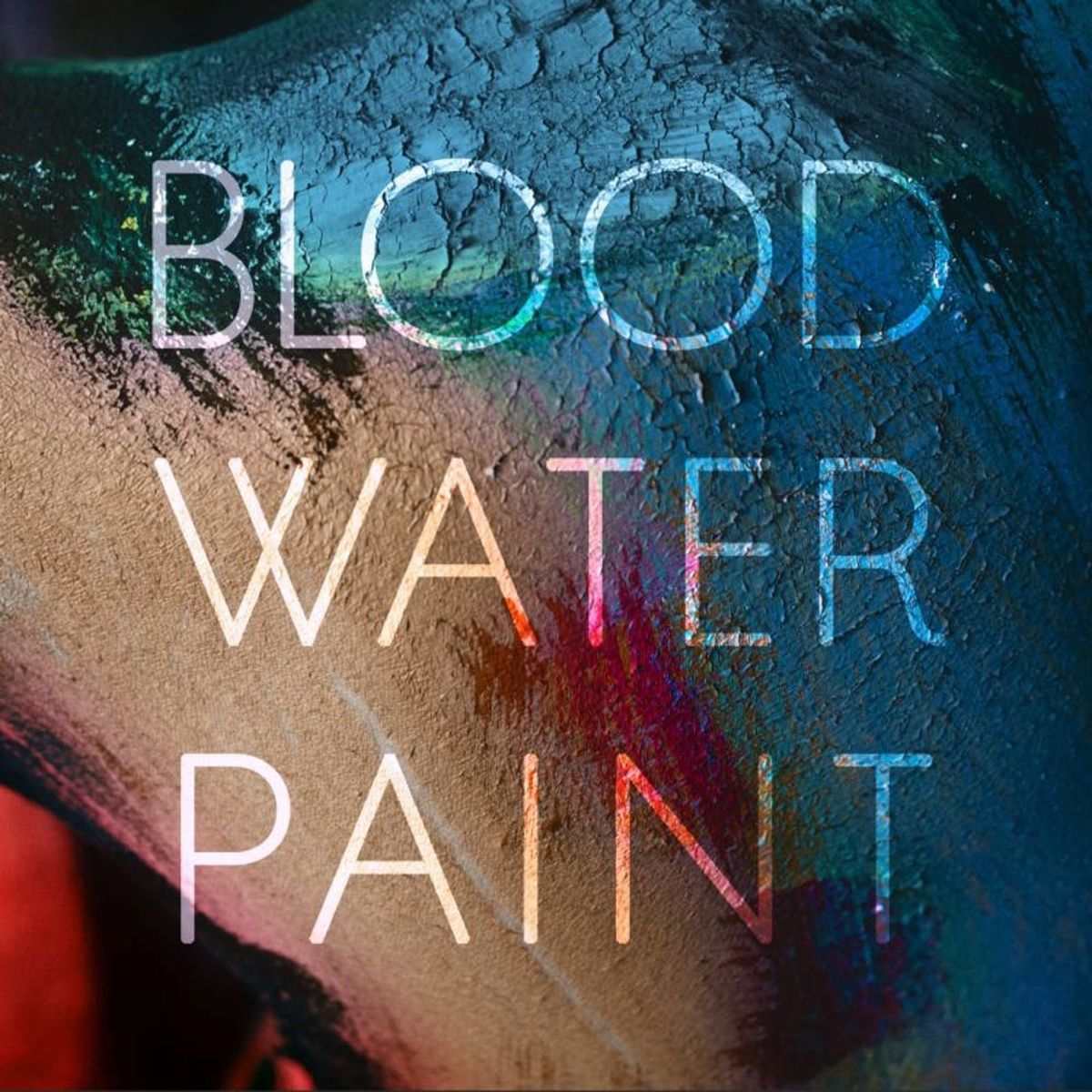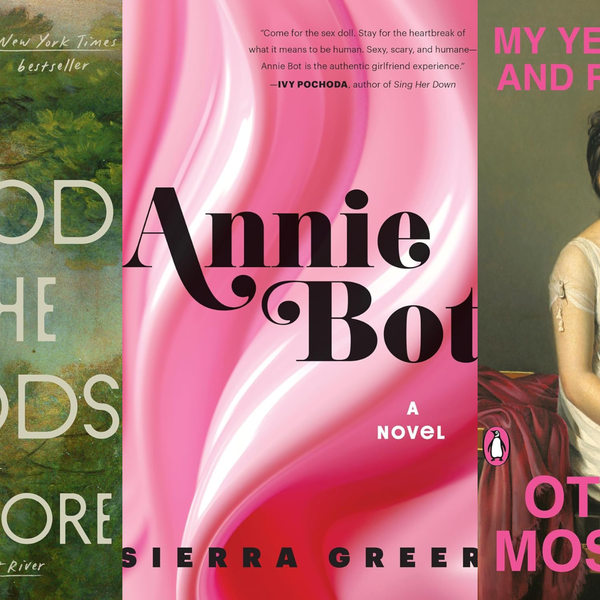This novel will completely change the way you read fiction — and define your own reality.
This Heartbreaking Novel About a 17th-Century Feminist Painter Speaking Up Is More Relevant Than Ever

From Hillary Clinton to Oprah Winfrey, bell hooks to Ruth Bader Ginsberg, we’re fortunate to have feminist icons both past and present to lead us with clarity and strength through uncertain times — like when we’re in the midst of figuring out what reality looks like after a movement like #metoo. Unfortunately, sexual predators know no age, race, or century — it’s literally a tale as old as time.
Blood Water Paint ($18) is an art historical fiction novel based on the true story of 17th-century Italian Renaissance painter Artemisia Gentileschi’s rape and subsequent trial. Written in lyrical prose that sweeps you up into the artist’s mind with passionate intensity, Blood Water Paint is an intimate, haunting, and deeply moving meditation on the importance of speaking your truth, no matter the consequences. We chatted with the author, Joy McCullough, about her writing process, overcoming creative obstacles, and what Gentileschi would have to say today.

Brit + Co: Can you talk about what drew you to Artemisia Gentileschi’s story and how you started writing Blood Water Paint?
Joy McCullough:Blood Water Paint began as a play. I’d read a passing reference to Artemisia in a Margaret Atwood novel and, intrigued to know more, began to research. I was outraged I’d never heard of her before. I began writing the play in 2001, and while it probably took me a few months to write a draft, the play had a very long development process. Many readings and workshops later, it had its world premiere in Seattle in 2015. By that time I had begun writing novels, and I started to think about the possibilities for adapting the play into a novel.
B+C: The verse in Blood Water Paint is poetic — it flows in a way you don’t see in most novels. Why do you think this storytelling device worked so well for Gentileschi’s voice?
JM: I do not have a background in poetry, but I have long adored reading novels-in-verse. I had previously written one manuscript that was partially in prose and partially in verse, which did not sell (but got me my agent!), but Blood Water Paint was the first book I wrote entirely in verse.
In some ways, I thought it would adapt well from a play to a novel-in-verse because plays, like verse, require great economy of language. But it turned out to be extremely challenging, because plays are entirely external — dialogue and action — while verse novels are extremely internal and usually don’t have much dialogue.
But I didn’t want to write Blood Water Paint as a prose novel. I think sometimes the details of historical day-to-day life can distance a reader and make them feel like the story is happening “back then.” But Artemisia’s story is, sadly, very now, and I felt like verse would let the reader connect with the emotional heart of the story without those historical barriers.
Also, the book centers on some very traumatic events. It would certainly be possible to write them in prose, but doing so would require describing these events in more graphic detail, while verse allowed me — again — to focus on the emotional core.
B+C:We read that you submitted 10 different manuscripts before Blood Water Paint got picked up, which is truly a testament to being resilient and believing in yourself. Can you speak to overcoming rejection, continuing to pursue your craft, and following passion projects?
JM: Yes! This is something I love to talk about, because if my story can inspire someone else feeling hopeless about their dreams, then maybe there was some purpose to all the time I spent crying in the shower. Even before I started writing fiction, I had around 300 rejections to my name as a playwright. Then I started writing fiction and didn’t get a book deal until the 10th book I wrote.
There’s a lot of emphasis in creative circles on showing up to the page, being disciplined, writing even when you’re not feeling it, and there’s value in that, but there’s also value in being kind to yourself and refilling the well.
Whatever field of creativity or entrepreneurship one might be in, I think it’s so crucial to surround oneself with like-minded people who have similar goals, who will challenge you and boost you in equal measure (and when I say surround oneself, I think the internet is a completely valid way to surround oneself with support — I rarely leave the house).
I also learned early on as a playwright to start working on the next thing once I sent something else out into the world. As soon as I wrote one novel and started sending it out to agents, I would start working on the next thing. Invariably, I’d get even more excited about the next thing, which served as a delightful distraction. It also meant I was ready with the next thing if the previous thing didn’t pan out.
B+C:This is a Penguin Teen book — what do you think makes this story (and how you told it) especially relevant for younger audiences?
JM: When I wrote the play, it was not intended specifically for a teen audience, but I really hoped teens would come to see the show. Artemisia is 17 years old when she is raped by her painting teacher. She’s fighting to make her voice heard, for someone to listen to what she has to say. Whether or not teen readers can relate to the sexual assault, they can all relate to her desire to be heard.
B+C: This story is incredibly timely, given the avalanche of sexual assault victims who are sharing their stories in the public sphere. What are you hoping Blood Water Paint adds to the conversation?
JM: I have had people say to me that I’m so lucky I wrote about such a hot topic, like I happened to write a zombie book at exactly the right time. But of course, a central point of the book is that this is not a hot topic — it’s an always topic. This has never not been an issue. And it’s also about my own personal pain, which long pre-existed our current cultural conversation. That said, I am incredibly grateful for the current discourse. I fluctuate between cynicism that anything will ever actually change, and a flickering hope that perhaps we are on the precipice of some sort of shift.
Blood Water Paint encourages readers to tell their story, to get messy, to paint the blood. And that doesn’t have to mean doing a press conference to take down a celebrity (though all the love to the people doing just that!).
It can mean telling one’s story to others, or even honestly telling one’s story to oneself. I want to recognize that not everyone is able to be open about their history of sexual violence, and that is a story each person should control for themselves. But I do think there’s so much healing — both personal and collective cultural healing — in speaking truth, shining light on the dark places.
B+C:What do you think Gentileschi would have to say about what’s happening now? Both how far we’ve come and how things maybe haven’t changed as much as they should have?
JM: In researching Blood Water Paint, I was able to read the entire transcript of the trial Artemisia’s rapist underwent. It was a gut punch the first time I read it, and every time since, to see that so little has changed. I can’t say there’s been zero change, because the trial was not for rape. It was for property damage — Artemisia being her father’s property, after all. So at least women can bring charges themselves now, in much of the world. But that’s a rather pathetic amount of progress for 400 years.
So I think Artemisia would be pissed off by the current state of things. I think she’d look around at this world of possibilities we have, where women are CEOs and senators, and winning the popular vote for president, and she’d think for a moment we’ve made massive progress. And then she’d read something like Salma Hayek’s haunting essay about her experiences with Harvey Weinstein, and she’d see that at the core of it, nothing has changed. Being a woman trying to make art, speak truth, always comes at a cost, and all too often, a violent one.
But I think she’d also see all these women who are breaking their silence and making themselves heard, and she’d be amazed that we’re still fighting the fight in the face of so little progress. She’d be right there in the trenches with us, telling us to get messy and paint the blood.
Will you read Blood Water Paint? Tweet us @BritandCo and let us know!



















